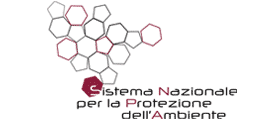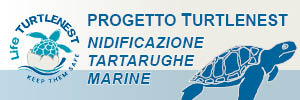THE MEDLEM (MEDiterranean Large Elasmobranchs Monitoring) PROGRAM and the database application
A tool for storing and sharing the large shark's data collected in the mediterranean countries

In all the seas of the world, the cartilaginous fish species are exploited for their fins, skin, jaws or meat. Sometimes they are directly targeted in commercial and recreational fisheries while in other cases they are caught incidentally as by-catch. In many areas of the world a decline in cartilaginous fish species landings has been observed while fishing effort has generally increased. This especially applies to the fisheries that target shark fins. Moreover, most countries report statistics related to sharks without making a distinction between species or, in worse still, they are not recorded at all. As a result, it is impossible to recognize the species in multi-specific fishery. Due to an inadequate collection of statistics on landings, it is difficult to estimate and monitor fishing mortality. Because of their life history characteristics, sharks and rays are especially susceptible to over-exploitation and it is very difficult to restore depleted population. Very often species have restricted distribution, small population size, dependence on mating, spawning, nursery and breeding grounds or specific habitats.
The fishing methods used to catch cartilaginous fish species in the Mediterranean are highly varied: the two most efficient gears for sharks are gillnets and longlines, while a frequent method for catching batoids in general and some smaller sharks like smoothhound, catsharks, etc. is the bottom trawl that is commonly performed throughout the Mediterranean area. Large elasmobranchs individuals are also captured with bottom longlines targeting hake. The drifting longlines set near the surface, with tuna and swordfish as targets, also capture some species.

MedLem is a monitoring programme on the captures and sightings of the large cartilaginous fishes occurring in the Mediterranean Sea. This programme directly links up with the FAO IPOA-SHARKS and it has been submitted to the discussion of the SAC Sub-Committee on Marine Environment and Ecosystems (SCMEE) of the GFCM (Barcelona, 6-9 May 2002) as “subproject Basking shark”.
During the meeting of the SCMEE held in Spain (Malaga, 10-12 May 2004) a common protocol to collect field data was proposed and many Mediterranean countries showed a willingness to cooperate on this initiative and to conform in the collection of data. In The seventh session of the General Fisheries Commission for the Mediterranean (GFCM) Scientific Advisory Committee (SAC), held in Italy (Rome, 19-22 October 2004), SCMEE reiterated the importance of a wider use of the MedLem protocols and information system already adopted by a number of regional bodies to favour timely exchange of information on Large Elasmobranchs.
In the Mediterranean area three species of elasmobranchs: the basking shark (Cetorhinus maximus), the giant devil ray (Mobula mobular) and the great white shark (Carcharodon carcharias) are those that most require protective measures. Actually, although they are not a direct target of any Mediterranean fisheries, they have been included under a number of conventions: Specially Protected Areas and Biological Diversity in the Mediterranean (all three are on Appendix II), Bern Convention and, in the case of the basking shark, on Appendix II of the Convention on International Trade in Endangered Species (CITES).
In order to contribute to the knowledge and conservation of these sharks it is important to establish a common procedure to collect data about the specimens that may be accidentally captured or in the cases of sightings and stranding in the Mediterranean Basin.
The principal aims of the programme are:
- Contribute to the knowledge and conservation of the sharks following a common protocol to collect data about the specimens sighted, stranded or accidentally captured in the Mediterranean Basin.
- The collection of scientific papers related to elasmobranches in the Mediterranean area.
The main objectives of the MedLem Database Application are:
- Implementation of data collection;
- Standardization of the data entry procedures;
- Effective data sharing among the participating countries.
- Free access for the participants to the web site www.arpat.toscana.it/medlem
In relation to this project “large cartilaginous fish” is defined as an elasmobranch of more than 100 cm Total Length or a batoid fish with a Disc Width more than 100 cm or Total Length more than 150 cm. The size of the monitored cartilaginous fishes is established on the basis of the maximum size reached from the different species. For this reason the species to be considered in the project belong to the families reported below.
List of the families to be considered in the MedLem project (PDF file, 190 KB)
Thanks to the collaboration with several research institutes, military authorities and with professional and recreational fishermen, MedLem programme allowed the acquisition of valuable information on catch, sighting and stranding of large cartilaginous fish, starting from 1795 up to now. As the most part of event recorded into the MedLem database concern Cetorhinus maximus (Gunnerus, 1765), a very important and protected species, an example of the practical use of these data is presented by Mancusi et al. (2005).
The database is under maintenance: it will be on line again at the end of 2017
Project chief: Fabrizio Serena (f.serena@arpat.toscana.it)








